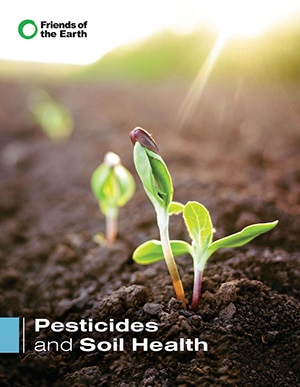Pesticides and Soil Health
Friends of the Earth
Regenerative agriculture shows us that building healthy soil can be a part of the solution to the climate crisis. By farming and ranching in ways that draw carbon down from the atmosphere — where it drives climate change — into the soil beneath our feet, regenerative agriculture can sequester carbon and build healthy soils that save precious water resources, increase soil biodiversity, improve crop yields and bolster resilience to drought and extreme weather associated with climate change.
Regenerative agriculture achieves these goals by keeping the soil covered and maximizing crop diversity through practices like cover cropping, crop rotation, reducing tillage, using compost to maintain soil fertility and rotational grazing for animals.
This brief summarizes the science on a third critical principle of regenerative agriculture that receives comparatively little attention: minimizing use of pesticides. The science is clear that pesticides disrupt soil biotic communities — the very life that drives soil carbon sequestration and, therefore, the heart of regenerative agriculture.

